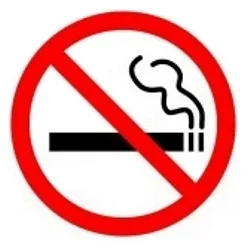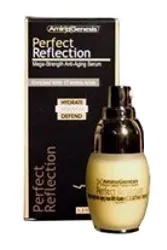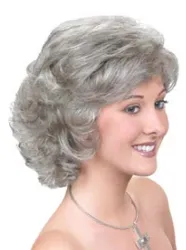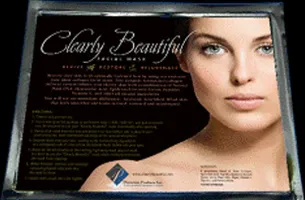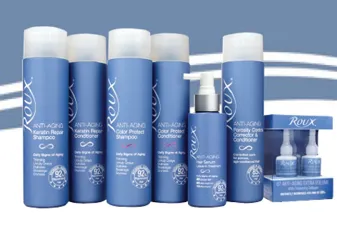
Do You Know Which UV Rays Can Accelerate Aging All Year Round?
 The hot summer temperatures are still consuming our days. Sun lovers everywhere have been hitting the beach as often as they can.
The hot summer temperatures are still consuming our days. Sun lovers everywhere have been hitting the beach as often as they can.
However, while they’re lying on lounges or swimming in the ocean, it’s very hard to remain out of the sun’s harmful rays. We all know by now the importance of applying sunscreen, but we still get side tracked by the strength of the sun and can end up coming home looking like a burnt red tomato!
Melanoma is the deadliest form of skin cancer and 65% of these cases can be attributed to damaging UV radiation, so it’s imperative to take extreme measures to prevent prolonged exposure. Before baking in the sun it's important for everyone to think about sun care, prevention and sunburn treatment.
The best way to take preventive sun care is to truly understand the different types of UV rays which consist of UVC, UVA and UVB. You might be surprised to discover that UVA rays, originally thought to be safe, can be even more damaging than UVB rays.
What is the difference between UVC vs. UVA vs. UVB Rays?
UV rays are divided into three sections according to their wavelengths from the sun to the earth. The different UV rays act differently on your skin including.
1. UVC rays do not usually reach the earth's surface because it's absorbed by the ozone layer above the earth. Due to the depletion of the ozone layer it might be possible to receive UVC exposure. Only brief exposure can cause light sunburn. Prolonged exposure to UVC is considered fatal.
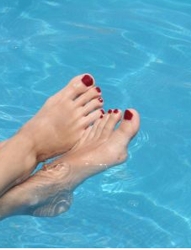 2. UVB rays are known as the tanning ray. It's strongest in the northern hemisphere during the summer months or when parts of the earth orbit closest to the sun. Sunblocks and sunscreens were initially developed to block UVB rays.
2. UVB rays are known as the tanning ray. It's strongest in the northern hemisphere during the summer months or when parts of the earth orbit closest to the sun. Sunblocks and sunscreens were initially developed to block UVB rays.
UVB rays only has the strength to penetrate the very top layer of the body - the epidermis, which has the same thickness as a silk scarf.
No blood vessels or nerve endings are present and is composed of keratinocytes (skin cells), basal cells and melanocyte cells. Melanocyte cells synthesize tyrosinase and the pigment melanin that is transferred to the keratinocytes or skin cells for color.
UVB rays simulate the melanocyte cells to produce more melanin which is more color known as a suntan or if a very small area known as a freckle, brown or age spot, and chloasma, melasma or hyperpigmentation in medical terms.
3. UVA rays were originally thought of as the safe ray back in the 1980s. Sun beds only had UVA rays as a result of the safety factor. Since then science has found UVA rays actually does more damage to the body than UVB. UVA rays accelerate the aging process.
UVA is the same strength year round regardless of how close or how far away the sun is from the earth. The ray remains the same strength and considered a light X ray penetrating light clothing, wind shields, office windows and hats to name a few. A daily full spectrum sunblock or sunscreen is a necessity, even when you're out in the car. Commuters can get sun damage just traveling back and forth to work.
 UVA shoots through the epidermis and disperses in the dermis the second major layer of your skin. The dermis is called the "true skin" and slows its replacement or renewing rate around the age of 28 years. Skin after this age is considered "mature skin" and damage is not mended as well if at all, fair skin people look in the mirror asking "What happened?”.
UVA shoots through the epidermis and disperses in the dermis the second major layer of your skin. The dermis is called the "true skin" and slows its replacement or renewing rate around the age of 28 years. Skin after this age is considered "mature skin" and damage is not mended as well if at all, fair skin people look in the mirror asking "What happened?”.
The dermis is composed of collagen, elastin, blood vessels, nerve endings and ground substances (glyco-amino-glycans, mucopoly-saccharides) providing a firm youthful mattress for your skin. Prolonged exposure to UVA cracks and shrinks the collagen and elastin reducing the size of this layer allowing the epidermis (top layer) to start drooping or hanging off the body.
Blood vessels become permanently dilated giving a constant red flush to the skin. The few remaining melanocyte cells that are scattered in the dermis can either die making a permanent white spot or become over active leaving a brown spot. There are no lasers or procedure available at the moment that completely guarantees the removal of brown spots. Some procedures actually can make them worse.
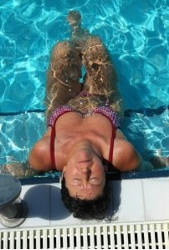 Sunlight regulates our biological clock and provides essential vitamin D. Common sense should be used in regulating your amount of time in the sun.
Sunlight regulates our biological clock and provides essential vitamin D. Common sense should be used in regulating your amount of time in the sun.
More Information
Please follow me on Twitter at: http://Twitter.com/HairBoutique. I look forward to meeting new people from all walks of Twitter and learning from their Tweets.
Visit us at Hairboutique.com located at: http://www.HairBoutique.com, on Facebook, MySpace and YouTube.
Thank you for visiting us at The HairBoutique Blog and for leaving your comments. They are very much appreciated. We apologize in advance but must remove any direct advertisements or solicitations.Social Media Network Information
Please follow us on Twitter at: https://Twitter.com/HairBoutique. I look forward to meeting new people from all walks of Twitter and learning from their Tweets.



